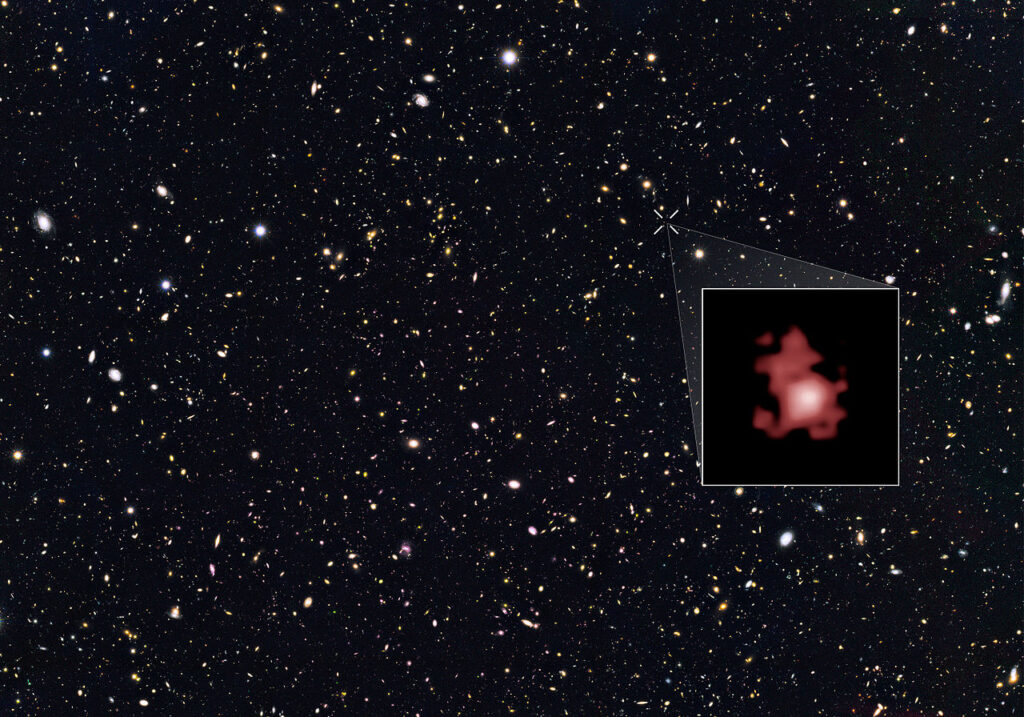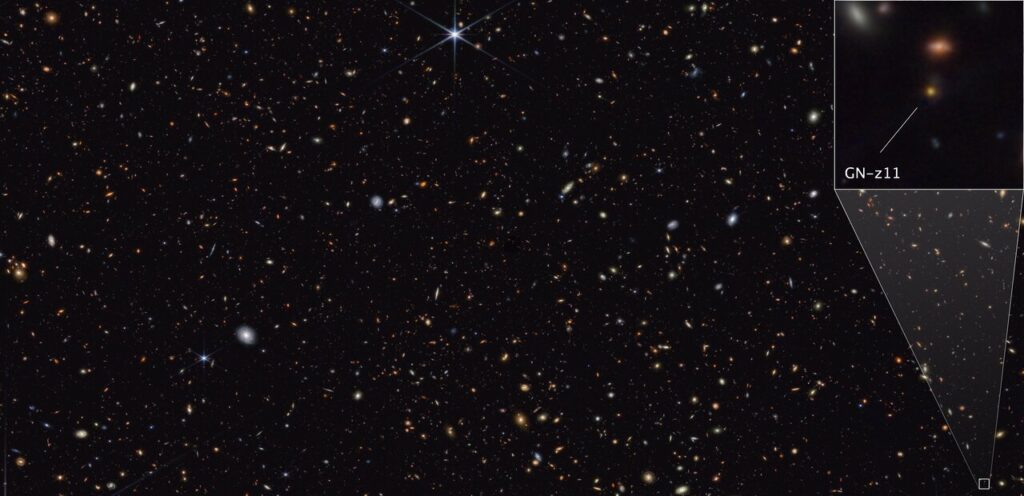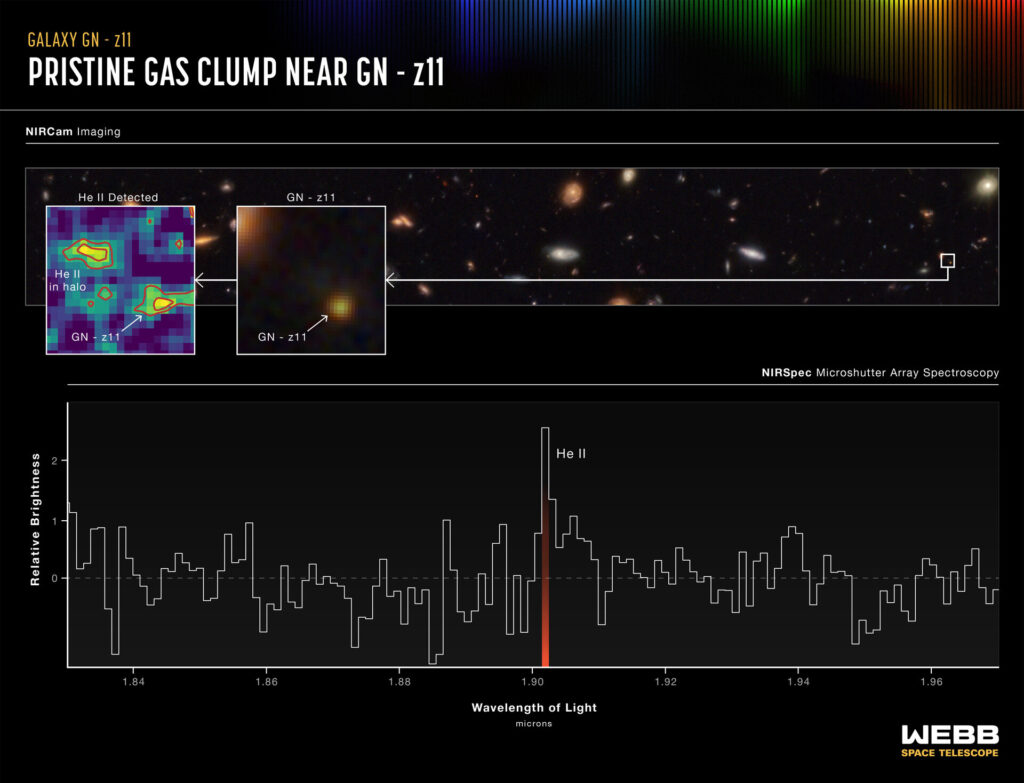Astronomers used the James Webb Telescope (JWST) to study one of the earliest galaxies in the universe. We see it as it was just 430 million years after the Big Bang.
Galaxy at the edge of the Universe
We are talking about the galaxy GN-z11. It was found by the Hubble telescope in 2015. The light emitted by GN-z11 took 13.4 billion years to reach Earth. But taking into account the expansion of the universe, the real distance to it is 32 billion light years.

GN-z11 is 25 times smaller than our galaxy in size and 100 times the mass of the stars. But the observed rate of star formation in it is 20 times higher than the current rate for the Milky Way. In addition, the galaxy is very bright.
The most distant black hole
Using JWST, astronomers have found an explanation for the abnormal brightness of GN-z11. At its center is a supermassive black hole, which is very actively absorbing matter. Its existence is indicated by the presence of extremely dense gas clouds, which are often found in the vicinity of black holes, and traces of ionized chemical elements. In addition, the researchers have found that the galaxy emits a very powerful wind. Such high-speed winds are usually caused by processes associated with the activity of supermassive black holes.

The final evidence was provided by the NIRCam camera. It found an extended component pointing to the host galaxy and a central compact source. The colors of the source correspond to the colors of the accretion disk around the black hole. Astronomers estimate that its mass is 2 million times that of the Sun. To date, it is the farthest active black hole known to astronomers.
First stars in the Universe
Another team of researchers used the NIRSpec and detected a gaseous clot in the GN-z11 halo. According to the researchers, they were unable to find anything but helium in it. This “purity” corresponds to the ideas of the galaxies of that era. Their halos were supposed to contain pockets of untouched gas that could collapse and form legendary Population III stars.

Population III stars were the first luminaries in the Universe. They were very massive (the existence of such stars is now impossible), very bright and very hot. There were no chemical elements heavier than helium in them. The formation of the first stars marked a fundamental shift in cosmic history, during which the universe transformed from a dark and relatively simple environment into the highly structured and complex structure to date.
In the future, astronomers plan to continue studying GN-z11. They hope to find new traces indicating the existence of Population III stars in it.
According to https://esawebb.org
Follow us on Twitter to get the most interesting space news in time
https://twitter.comne/ust_magazine


